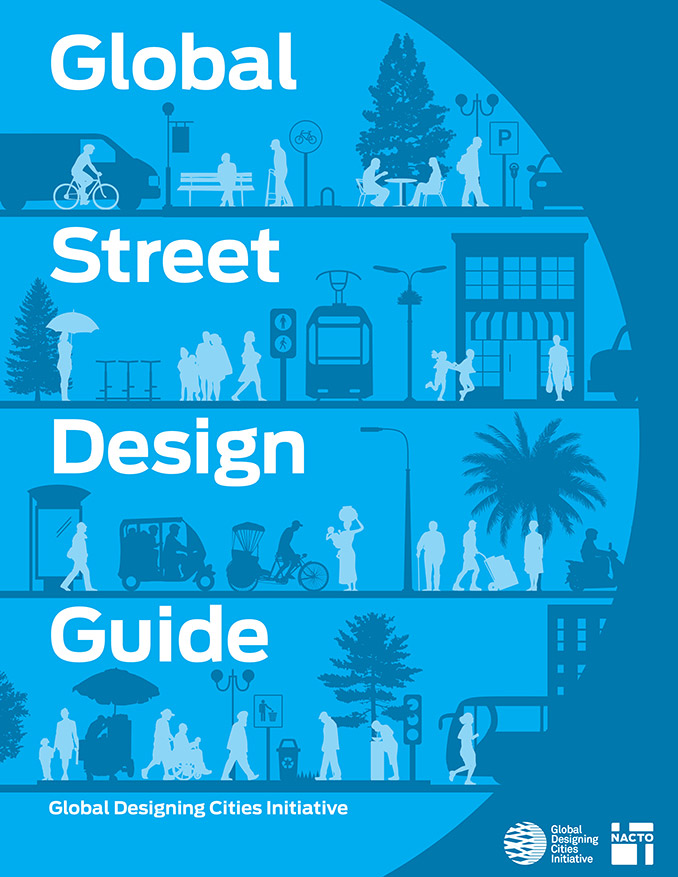


The National Association of City Transportation Officials (NACTO) and the Global Designing Cities Initiative recently announced the launch of the Global Street Design Guide as a globally accessible document that can be downloaded at no cost, allowing urban planners, designers and transportation practitioners in cities around the world to immediately implement tested and life-saving street designs. The worldwide release of the guide, made possible by the Bloomberg Initiative for Global Road Safety, will also soon include translations into Spanish, Portuguese, Mandarin and other languages making the guide even more accessible. The launch comes as 29 cities and 15 organizations—including London, Buenos Aires, Sydney, Addis Ababa and Toronto—have endorsed the guide as a new standard for transforming streets to prioritize safety, pedestrians, transit and sustainable mobility.
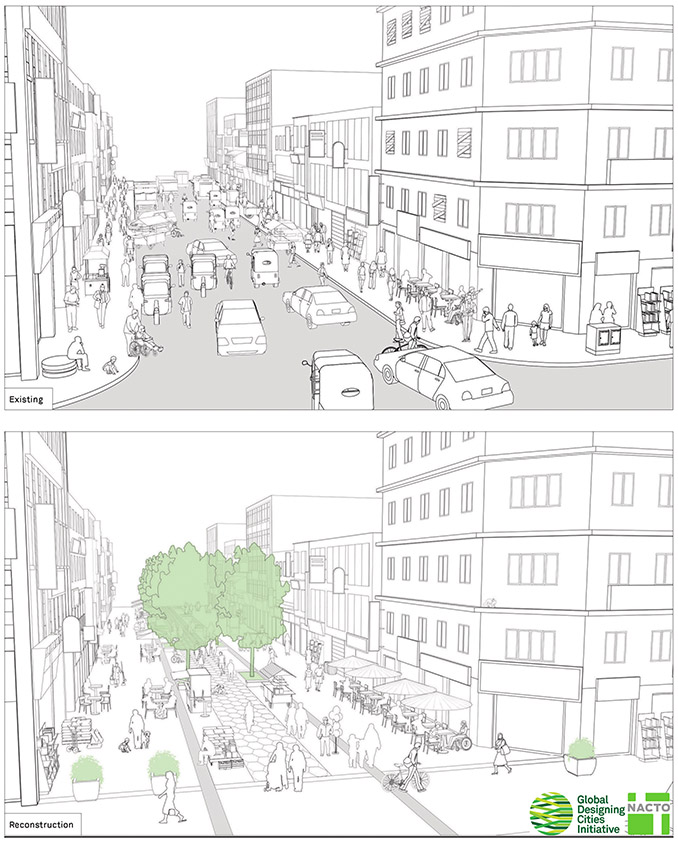
Globally, 1.25 million people are killed in traffic deaths, often the result of road design that contributes to high speeds and dangerous driving. Created with the input of 72 cities in 42 countries, the Guide presents essential street types and unique street and intersection transformations that put people first and that can be applied to streets worldwide. With over 40 case studies from cities of wide ranging populations, the Guide shows possibilities from moving more people with transit lanes, to dedicating space for vibrant economic activity like street vendors, and provides a toolkit of street designs that can be applied in a variety of contexts worldwide.
“City streets are at the center of so many big challenges facing the world, from health and safety to climate change. This guide helps city leaders meet those challenges in ways that also connect people to jobs and services and bring new life to neighborhoods. The guide is full of creative ways cities are reshaping streets to better serve the public – and if those ideas spread around the world, they can help improve billions of lives.” – Michael R. Bloomberg, Founder of Bloomberg Philanthropies, and Former Mayor of the City of New York.
The Global Street Design Guide is a timely resource that sets a global baseline for designing streets and public spaces and redefines the role of streets in a rapidly urbanizing world. The guide will broaden how to measure the success of urban streets to include: access, safety, mobility for all users, environmental quality, economic benefit, public health, and overall quality of life. The first-ever worldwide standards for designing city streets and prioritizing safety, pedestrians, transit, and sustainable mobility are presented in the guide. Participating experts from global cities have helped to develop the principles that organize the guide. The Global Street Design Guide builds off the successful tools and tactics defined in NACTO’s Urban Street Design Guide and Urban Bikeway Design Guide while addressing a variety of street typologies and design elements found in various contexts around the world.

“Streets are the foundation of a city’s entire social structure—getting around, working, living, shopping, and playing. With the guide, cities have, for the first time, a universal resource for creating cities that operate for everyone who uses them.” – Enrique Peñalosa, Mayor of Bogotá.
The Global Street Design Guide has been endorsed by 29 global cities, including Accra, Ghana; Addis Ababa, Ethiopia; Auckland, New Zealand; Bandung, Indonesia; Bogota, Colombia; Buenos Aires, Brazil; Charlotte, USA; Chicago, USA; Fortaleza, Brazil; Helsinki, Finland; Kabul, Afghanistan; London, UK; Los Angeles, USA; Melbourne, Australia; Mexico City, Mexico; Nairobi, Kenya; New York City, USA; Philadelphia, USA; Pittsburgh, USA; Recife, Brazil; Santiago, Chile; Seattle, USA; Stockholm, Sweden; Sydney, Australia; San Francisco, USA; Sao Paulo, Brazil; Tirana, Albania; Toronto, Canada; and Vancouver, Canada.
“The Global Street Design Guide makes it clear that for Melbourne the first priority of city streets is people; and after all, great streets make great cities. The Guide’s people and place-based approach will help cities shift away from conventional street designs and move towards contextual solutions for our rapidly growing urban areas.” – Melbourne Lord Mayor Robert Doyle
Street design is also the key to resolving larger issues of cities’ economic vitality, livability, and physical and social mobility. The Guide comes as urban populations increase around the world and amid a sea change in the number of cities designing, testing and implementing street transformations.
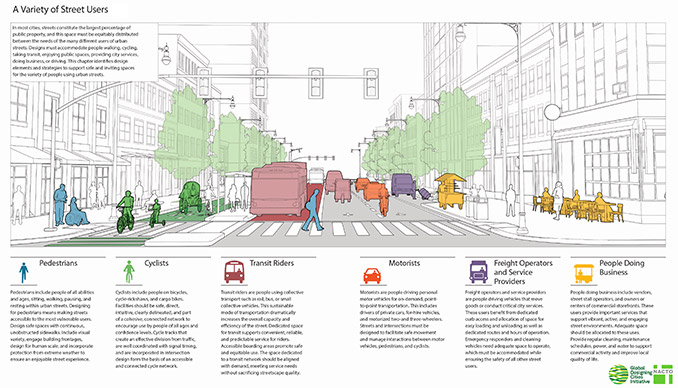
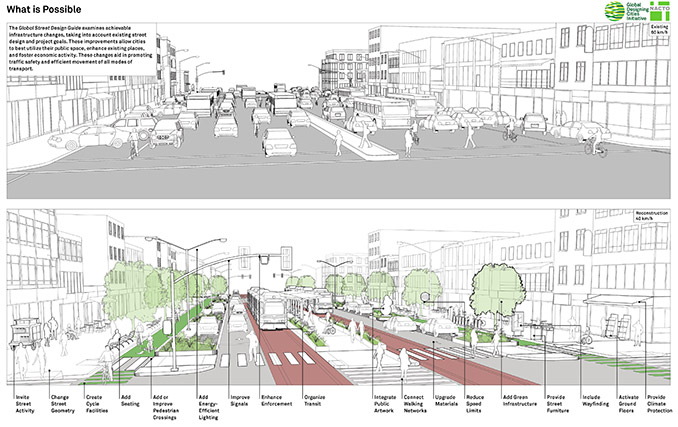
The Global Street Design Guide sets a new global baseline for designing urban streets. Recognizing that cities are places for people, the guide shifts the parameters of designing urban streets from the typical point of view of automobile movement and safety, to include access, safety, and mobility for all users, environmental quality, economic benefit, enhancement of place, public health, and overall quality of life.
The Guide builds on NACTO’s successful Urban Street Design Guide, Urban Bikeway Design Guide, and Transit Street Design Guide, expanding from a North American context to address a variety of street typologies and design elements found around the world.
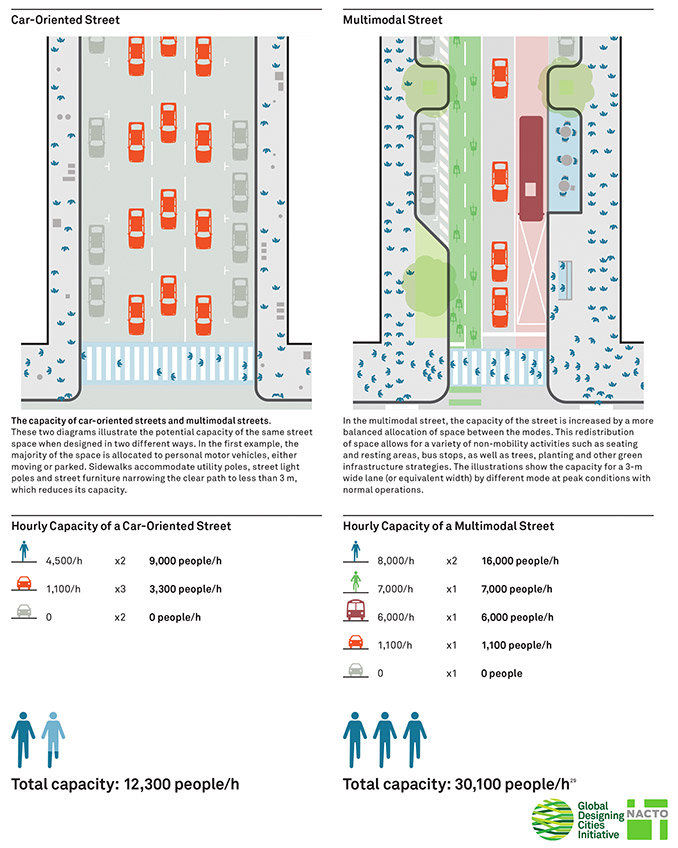
In addition to 29 global cities cities, the following organizations have endorsed and supported the Guide to date: 8-80 Cities; Automobile Club of Moldova; Belarusian Auto Moto Touring Club; Bernard van Leer Foundation; C40 Cities; Eastern Alliance for Safe and Sustainable Transport; FIA Foundation; Global Road safety Partnership; Inter-American Development Bank; Institute for Transportation and Development Policy; John Hopkins University Bloomberg School of Public Health; Partnership for Road Safety Foundation; Save Life Foundation; Vital Strategies; the World Resources Institute Ross Center for Sustainable Cities; and the World Bank.
Development of the Guide was supported by Bloomberg Philanthropies, as part of Bloomberg Philanthropies’ Initiative for Global Road Safety.
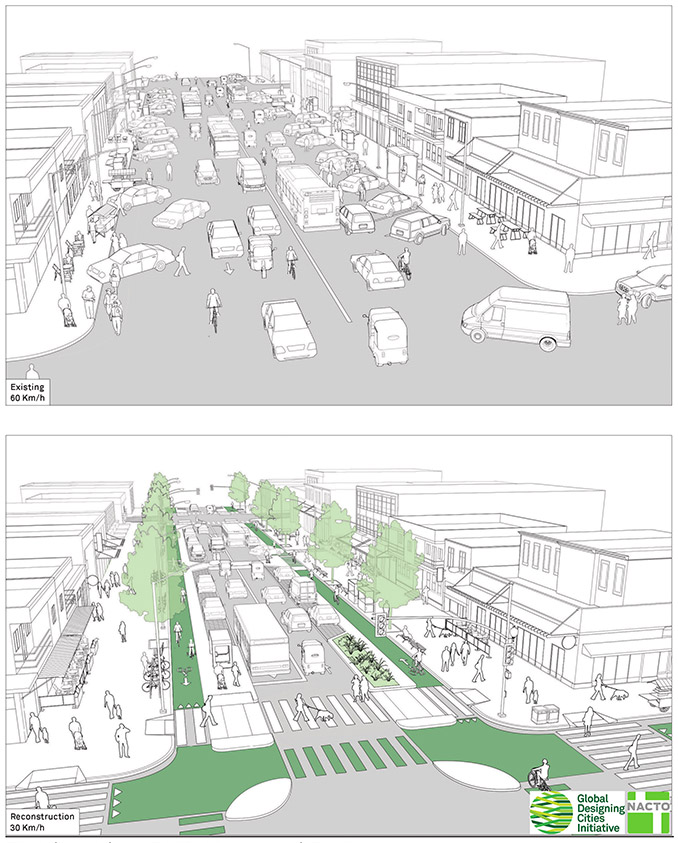
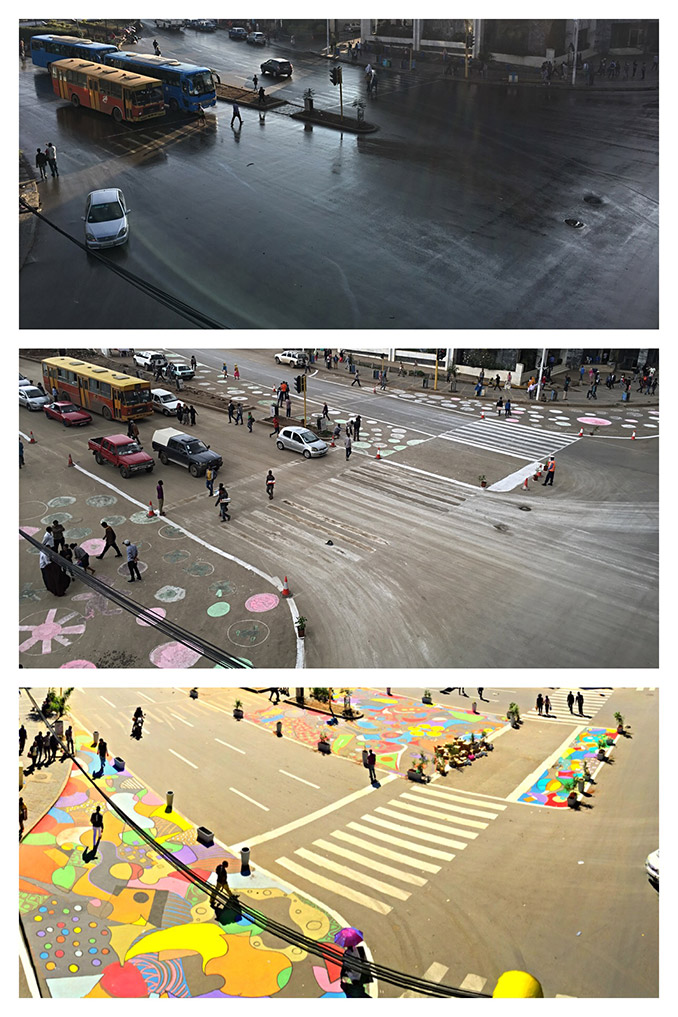
Images Courtesy of NACTO and Global Designing Cities Initiative